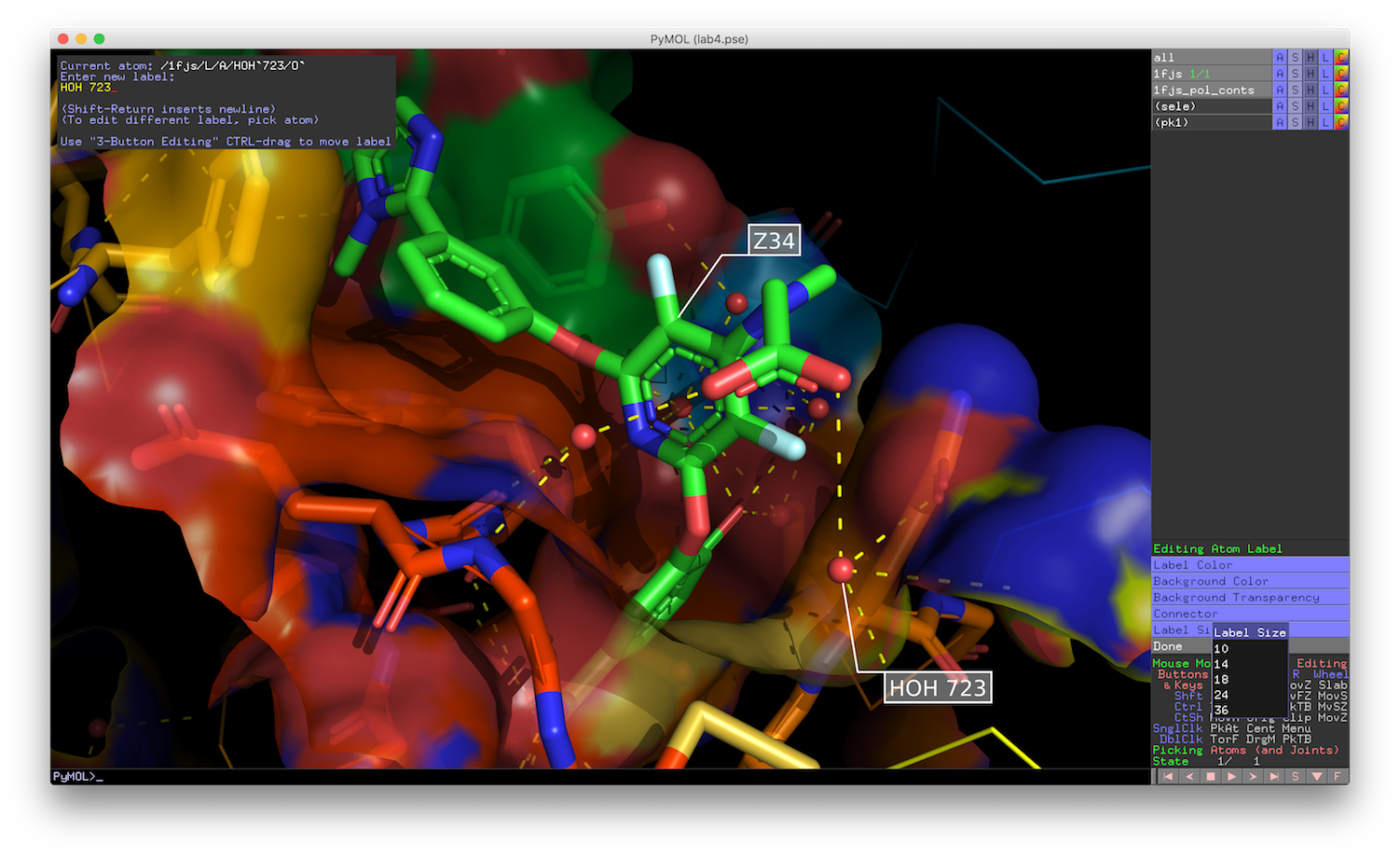PyMOL We have a campus-wide license agreement for PyMOL and AxPyMOL. Access to the license keys are limited to current students, faculty, and staff at Stanford.As a subscribing organization, we have access to the latest version of the software, including beta versions, as. PyMOL is a powerful and comprehensive molecular visualization product for rendering and animating 3D molecular structures. PyMOL is a molecular visualization tool widely used by the Rosetta community. The PyMOL Wiki contains documentation on the program methods and numerous examples. Beginners should start with this tutorial.A simple workshop is part of the PyRosetta tutorials. If you are building PyMOL from source on Linux (this does not take long and is explained here) then you may need to install the python.

PyMOL can interpret over 30 different file formats from PDB files to multi-SDF files to volumetric electron density maps. PyMOL's straightforward graphical user interface allows first-time and expert users alike to create stunning 3-D images from their favorite file formats. Images and movies can then be saved in a cross-platform Session file, ensuring that every object position, atom color, molecule representation, molecular state, frame, and movie can be viewed by colleagues exactly as intended.
Using PyMOL, data can be represented in nearly 20 different ways. Spheres provides a CPK-like view, surface and mesh provide more volumetric views, lines and sticks put the emphasis on bond connectivity, and ribbon and cartoon are popular representations for identifying secondary structure and topology. PyMOL's quick demo, accessible through the built-in Wizard menu, gets users started with all of the standard representations.
Features:
VIEW 3D Molecular Structures
RENDER Figures Artistically
ANIMATE Molecules Dynamically
EXPORT PyMOL Geometry
PRESENT 3D Data with AxPyMOL
DEVELOP with JyMOL
The material for this series of workshops is provided as a printed workbook of 173 pages loaned during classes.
PyMOL workshops are currently split into 3 successive sessions.
Materials below is a slide hand-out (PDF format) and in-class set-up and summary (as live Jupyter notebook.)
At the bottom of this page, check out the video tutorials playlists from YouTube.
PyMOL Tutorial books

See also post PyMOL Tutorial Books Released (June 20, 2019)
The Biochem 660 PyMOL tutorial book has been split in 4 PDFs for easier read and download:
- Book 1: Molecular Graphics Essentials (Summary of methods to acquire 3D data; file formats)
- Book 2: PyMOL part 1 (Graphical representations and atom selection, electrostatic potentials, side-chain mutations, 3D overlays, …)
- Book 3: PyMOL part 2 (scripts, animations and movies, multimeric structures, morphing)
- Book 4: PyMOL part 3 (Electron Density Maps)
On-line hand-outs:
Added note: Parts 1-3 of the hand outs correspond altogether to books 2 and 3 above (PyMOL parts 1 and 2)
PyMOL_part 1 (of 3)
- Slides hand out part 1 (PDF, color, 6 slides per page) (last updated – September 11, 2018)
- Short hand out part 1(rendered ipython jupyter notebook)

PyMOL_part 2 (of 3)
- Slides hand out part 2 (PDF, color, 6 slides per page)
- Short hand out Part 2 (rendered ipython jupyter notebook)
PyMOL_part 3 (of 3)
- Slides hand out part 3 (PDF, color, 6 slides per page)
- Short hand out Part 3 (rendered ipython jupyter notebook)
Pymol Select
(PYMOL sections last updated: September | October 2017)
Video Tutorials (External)

Pymol Educational
Playlist from Channel “Molecular Memory”
The Pymol Molecular Graphics System

Playlist from “Swanson Does Science”
